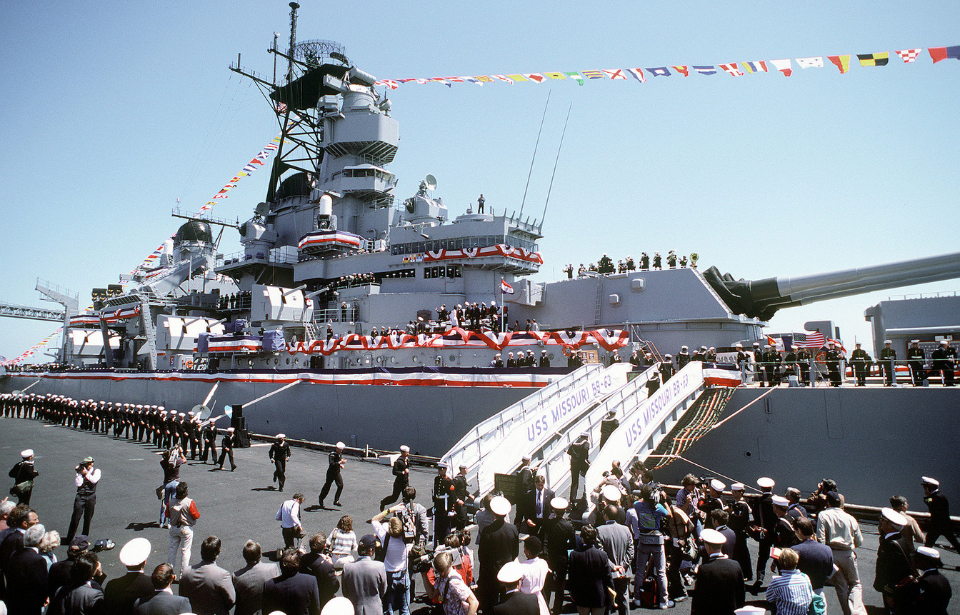Joining the stage after her counterparts, construction of the USS Missouri (BB-63) wrapped up in January 1944, making her the last American battleship to enter service during the Second World War. Despite her delayed debut, the vessel holds a noteworthy position in history, serving as the location for the Japanese surrender in September 1945. This event officially signaled the end of the global conflict that had tightly held the world in its grip for six long years.
The United States wanted to counter Japan
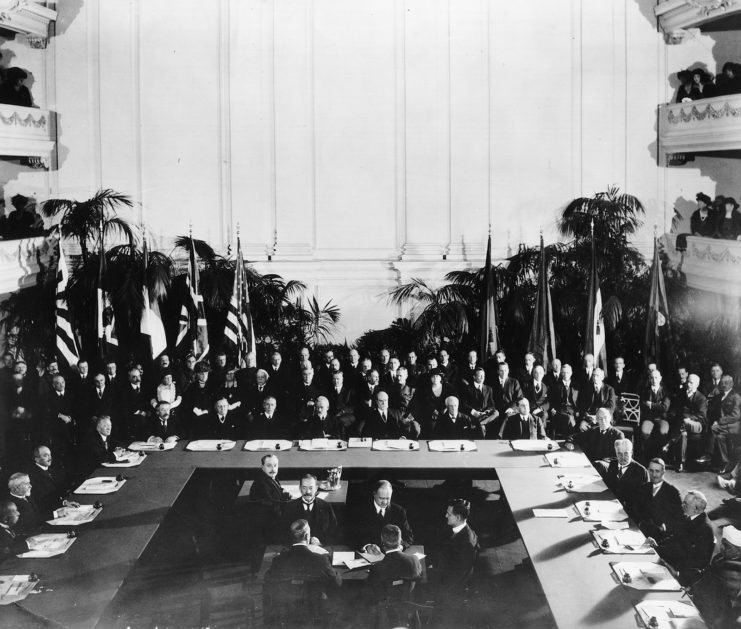
During the peacetime era of the 1930s in the United States, there was a prevailing sense among military officials that a conflict with Japan could be a possibility. In response, the Navy received the directive to develop a new battleship design, with the aim being to counter Japan’s Kongō-class battlecruisers.
Post-World War I, the nations of the world entered into the Washington Naval Treaty, imposing restrictions on the size of newly-constructed ships. This was succeeded by the Second London Naval Treaty, which Japan opted not to sign. Negotiations ensued, granting the US permission to construct battleships with a tonnage of up to 45,000, in contrast to the previous limit of 36,000.
Construction of the USS Missouri
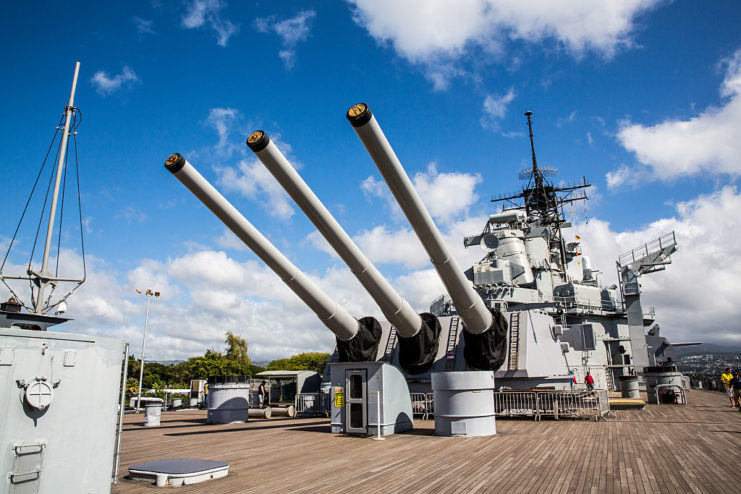
Upon the approval of plans, the order for the USS Missouri was placed in June 1940, and construction commenced the following January. The work on the Iowa-class battleship was successfully concluded in 1944, with 30,000 spectators bidding farewell.
Equipped with turbines, Missouri achieved an impressive top speed of 32.5 knots. Her formidable main battery comprised nine 16-inch .50-caliber Mark VII deck guns, while her secondary armament included 20 dual-purpose five-inch .38-caliber guns and 20 quadruple mounts for 1.6-inch Bofors guns, providing robust anti-aircraft defense. In addition to this firepower, Missouri boasted forty-nine 0.8-inch Oerlikon light AA auto-cannons positioned along her length.
After a shakedown cruise in the vicinity of the Chesapeake Bay, the battleship journeyed to Hunters Point Naval Shipyard in San Francisco, California, where she underwent modifications to serve as a fleet flagship.
The USS Missouri was the site of the Japanese surrender
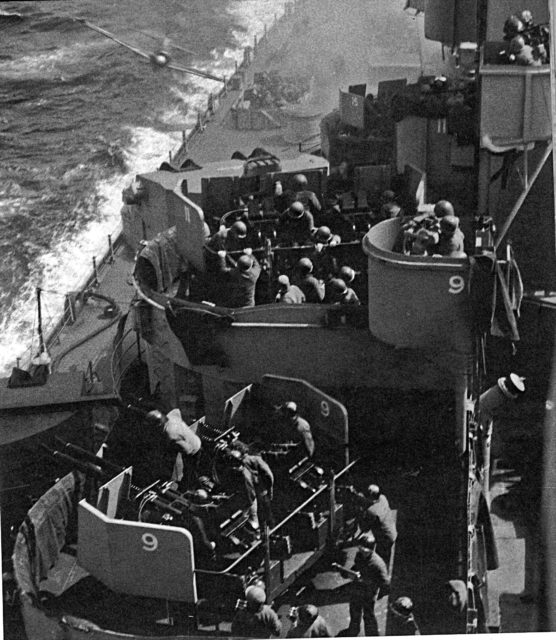
Upon entering service, the USS Missouri was deployed overseas as part of Task Force 58, arriving near Tokyo in January 1945. The battleship promptly engaged in an attack on the city, leveraging her armaments for anti-aircraft support. Subsequently, she continued to carry out strikes against Japan, including during active participation in the Battle of Iwo Jima.
Shortly before the Battle of Okinawa, Missouri and two other US vessels were reassigned to Task Force 59 and given the mission of bombarding the southern part of the island. This diversionary tactic aimed to draw the Japanese away from the invasion of the island’s western side. In April 1945, Missouri experienced an attack by kamikaze aircraft, resulting in only cosmetic damages. A few days later, another kamikaze pilot struck the vessel, injuring two crewmen.
On September 2, 1945, Missouri served as the site of the Japanese surrender. The formal ceremony was attended by Gen. Douglas MacArthur and Adm. Chester Nimitz, while on the Japanese side, Minister of Foreign Affairs Mamoru Shigemitsu was present.
Service during later US-involved conflicts
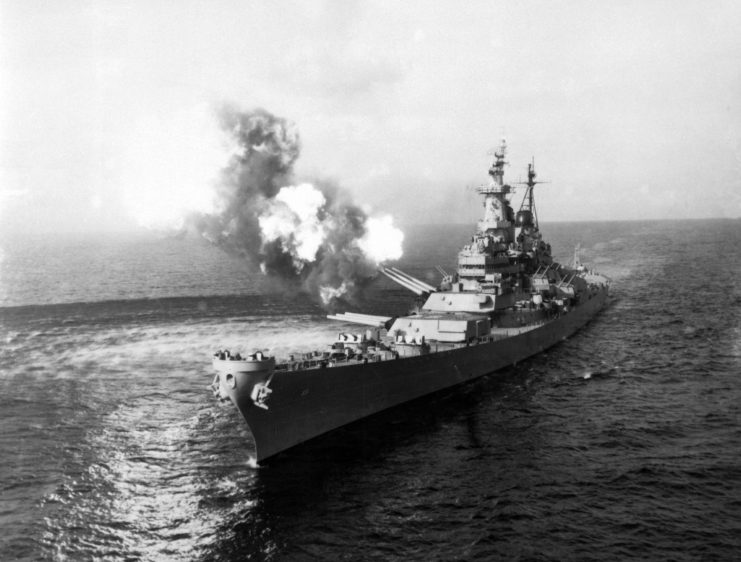
Once more, the USS Missouri was called into action in 1950, responding to the outbreak of the Korean War. Initially assigned to the Pacific Fleet, she became the first US battleship to reach Korean waters. Over the course of the conflict, the vessel engaged in shoreline bombardments and served as an escort for carriers.
In 1955, Missouri underwent decommissioning and was sent to Puget Sound. Over the ensuing decades, she found a home in Seattle, drawing in crowds as a popular tourist attraction, with approximately 250,000 visitors each year.
During Ronald Reagan‘s administration, an effort to bolster the US Navy’s fleet in response to the USSR’s perceived threat led to Missouri‘s reactivation. The ship underwent significant upgrades, incorporating state-of-the-art weapons and technology. This included the installation of four Mk 141 quad cell launchers for RGM-84 Harpoon anti-ship missiles, a set of Phalanx 0.8-inch .76-caliber Close In Weapon System rotary cannons and eight Mk 143 Armored Box Launcher mounts for Tomahawk missiles.
Three years later, in 1987, Missouri was deployed to Kuwait as part of Operation Earnest Will, equipped with 25 mm chain guns and 40 mm grenade launchers. In January 1991, she arrived in the waters off the Persian Gulf, contributing to America’s efforts during Operation Desert Storm by engaging in mine-clearing operations and providing crucial fire support.
The USS Missouri‘s retirement and legacy
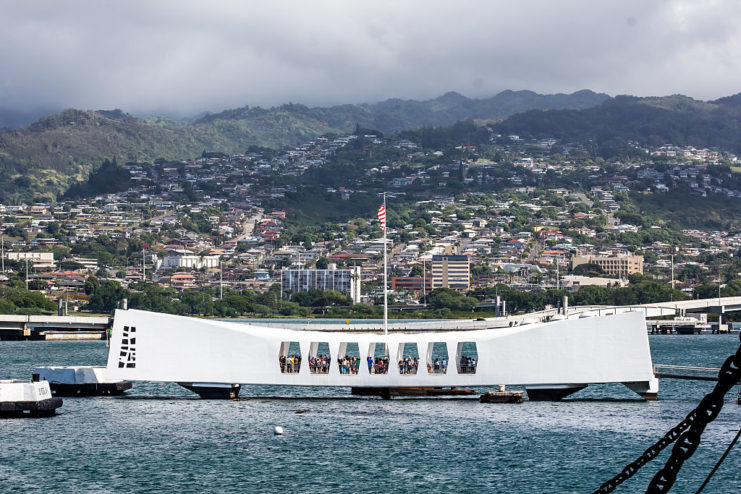
Ronald Reagan brought the USS Missouri out of retirement as a check against the Soviet Union. However, by the mid-1990s, the USSR had dissolved and Russia was no longer a threat. As such, the US military was looking to cut costs, forcing the battleship back into retirement.
More from us: U-111: Wreck of Famed WWI-Era German U-boat Discovered Off the Coast of Virginia
At first, Missouri returned to Puget Sound, before being sent to Ford Island in 1998. That’s where she remains to this day, docked some 500 feet from the USS Arizona Memorial. Missouri faces the memorial, in a position symbolizing a permanent watch over those who lost their lives during the Japanese attack on Pearl Harbor in December 1941.
